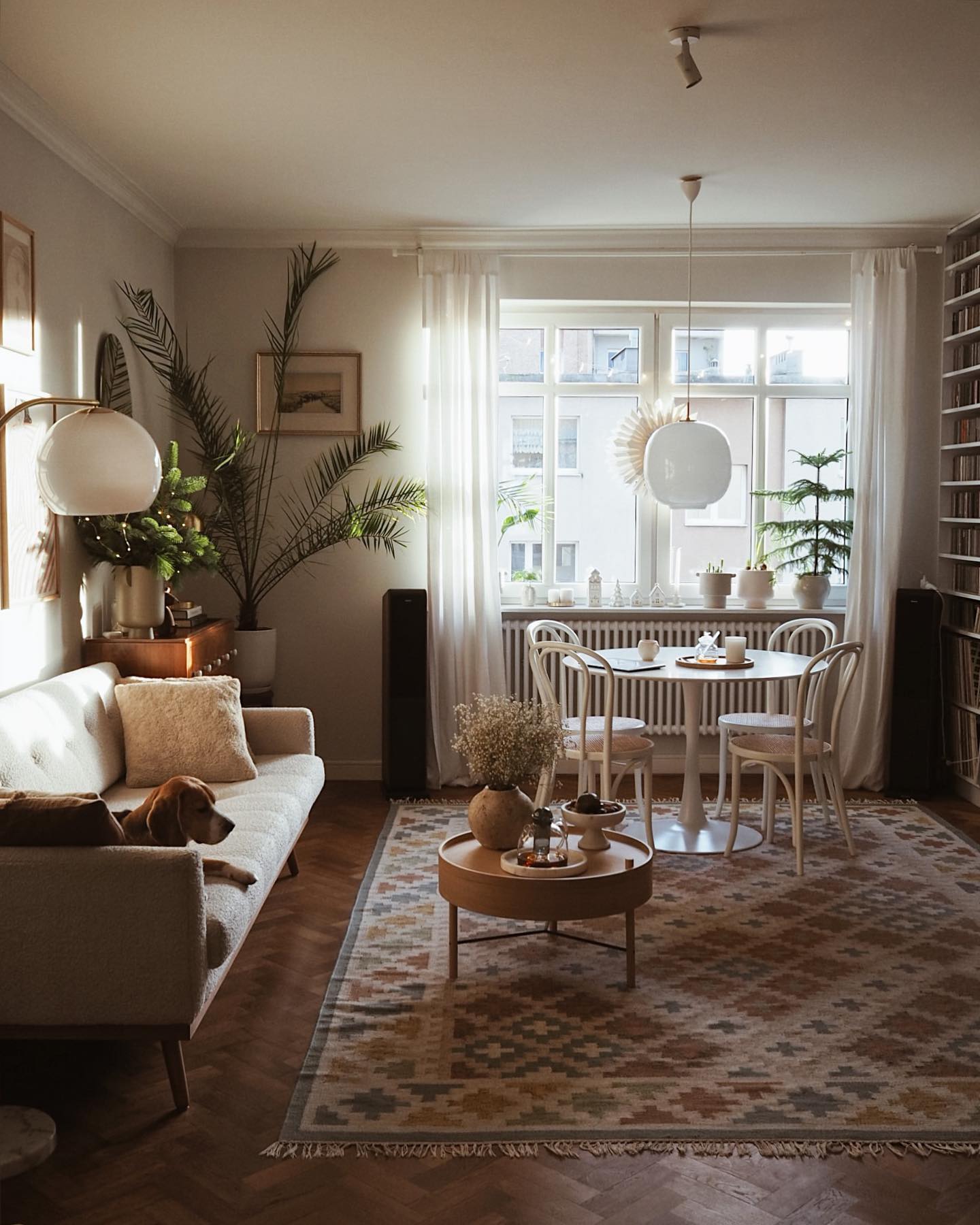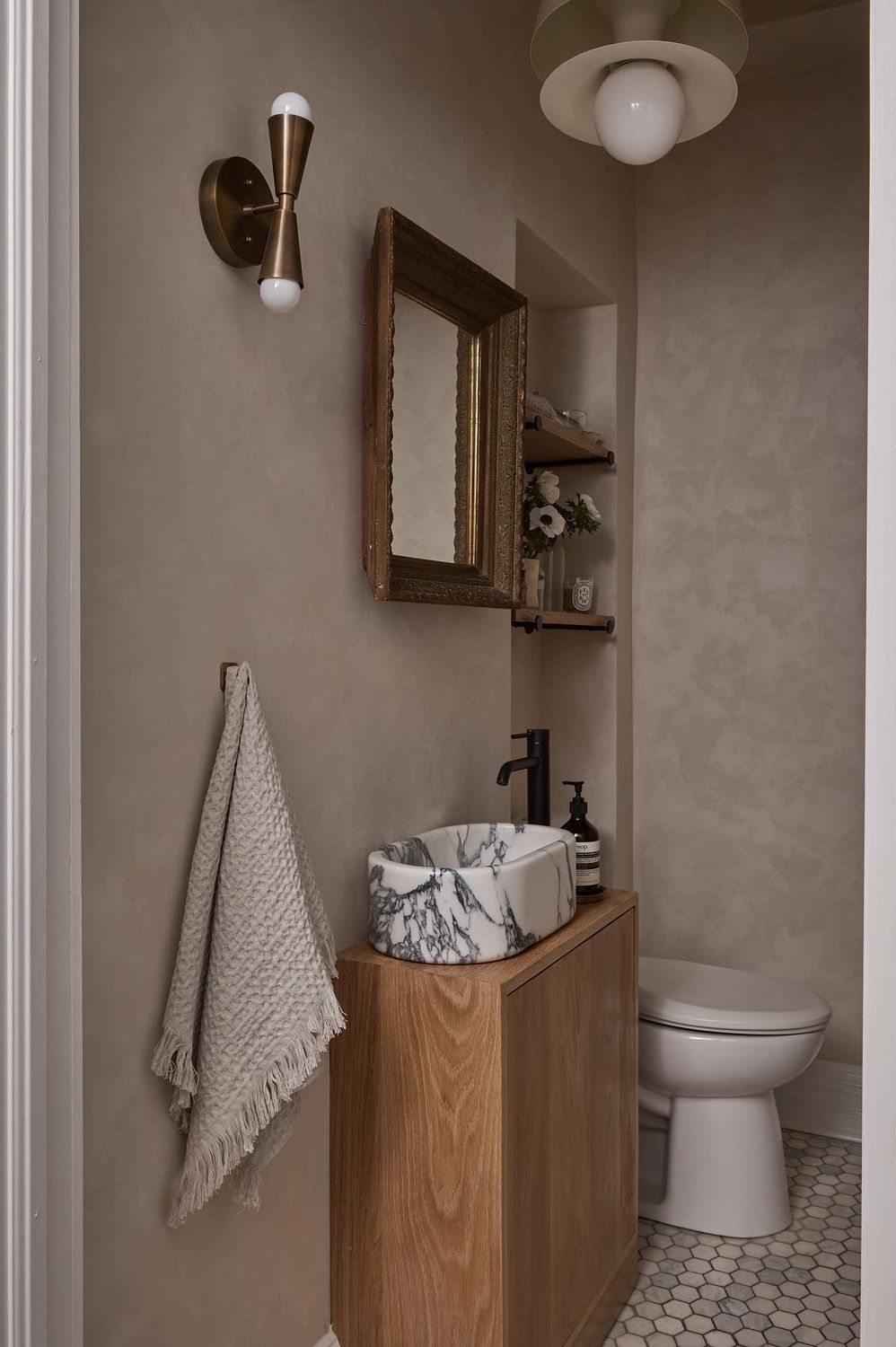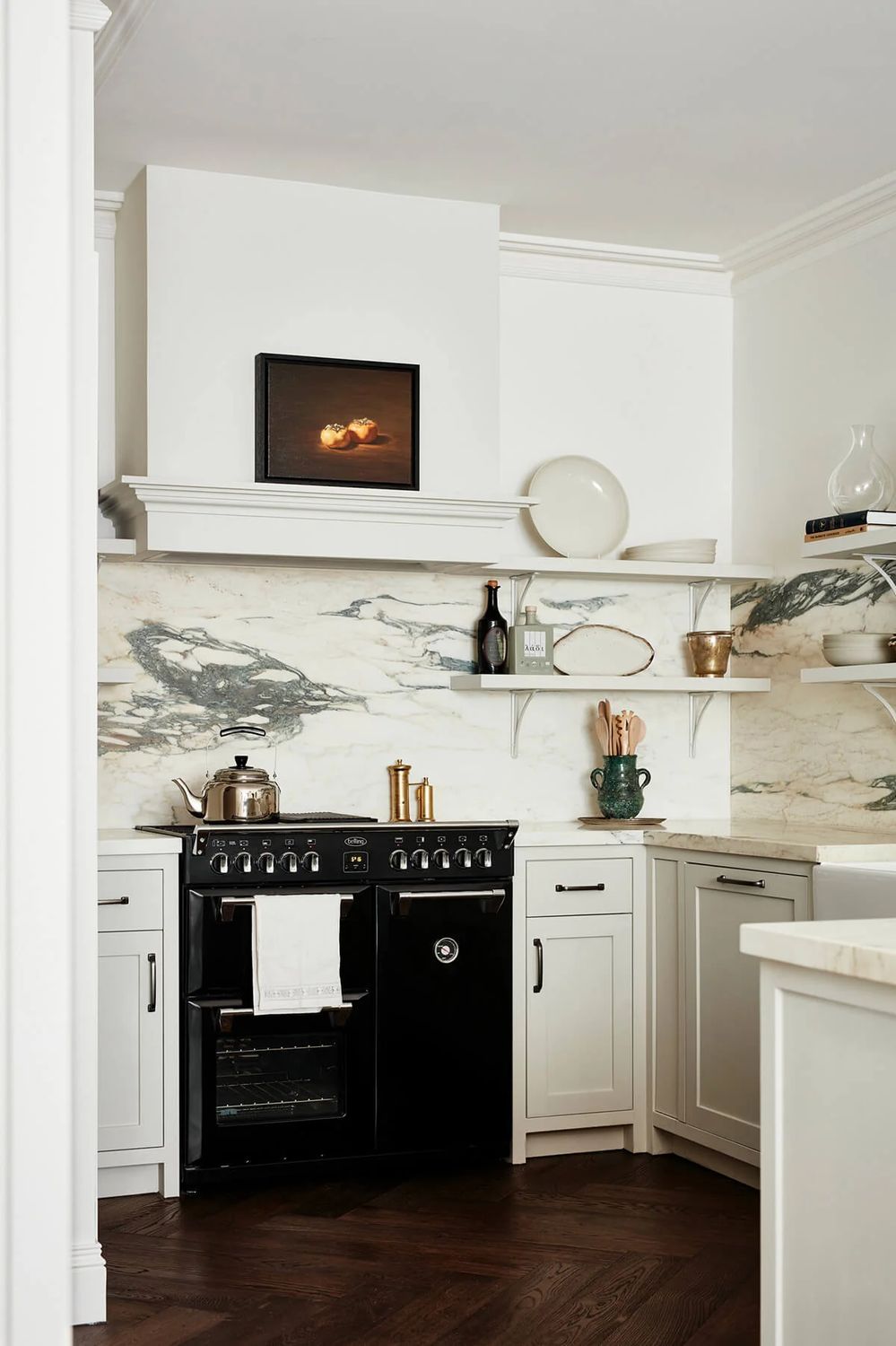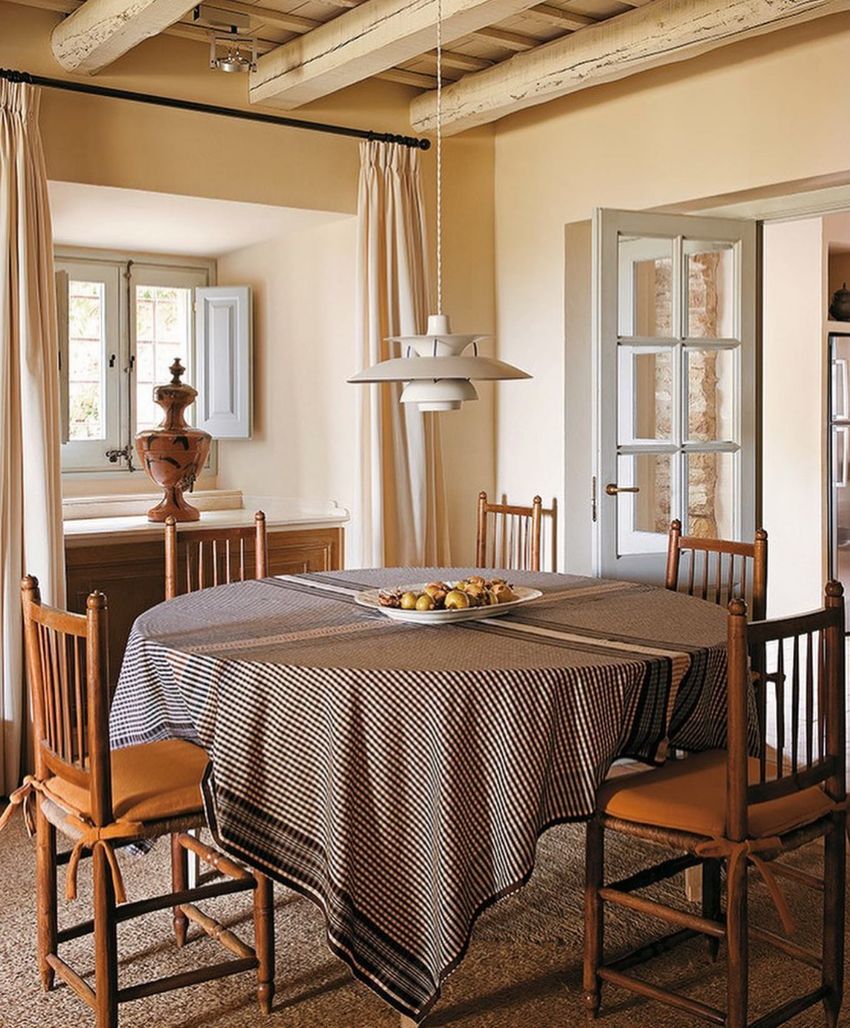The living room dining room combo – a space that can be both a haven for relaxation and a hub for social gatherings. But for many of us, it can also be a design dilemma. How do you create a cohesive look that balances the needs of both spaces, without sacrificing style or functionality? The answer lies in thoughtful planning and deliberate design choices.
By considering the flow of traffic, the layout of furniture, and the color palette, you can create a seamless transition between the two areas, resulting in a beautiful and inviting space that’s perfect for everything from cozy nights in to festive gatherings with friends and family.
Living Room Dining Room Combo Concept
Understanding the concept of living room dining room combos involves recognizing the growing trend in interior design that seeks to maximize space while fostering a sense of connection and functionality within the home. These dual-purpose areas bridge the often-separated functions of dining and living spaces, creating a versatile environment suitable for both relaxation and entertaining.
In small apartments or homes, where square footage is at a premium, combining these spaces can make a significant difference in the overall flow and usability of a room. The key to a successful living room dining room combo lies in careful planning and design choices that harmoniously integrate both areas.
This includes selecting appropriate furniture that complements the style and functionality of each space—such as a stylish dining table that can also serve as a workspace, or comfortable seating that invites conversations while accommodating dining needs. Thoughtful use of color, lighting, and decor can further distinguish each area while ensuring they feel cohesive.
Benefits of a Combined Space
A combined living and dining room space offers numerous benefits that enhance both functionality and aesthetics in home design. By merging these two essential areas, homeowners can create a more open and inviting atmosphere, allowing for better flow and communication among family members and guests. This open concept encourages interaction during gatherings, making it easier to entertain and socialize.
Additionally, the unified space can maximize natural light, as larger, uninterrupted areas allow for better light distribution, creating a brighter and more cheerful environment. A combined living and dining area also provides flexibility in furniture arrangement; you can experiment with different layouts to optimize both spaces according to your preferences and activities.
Furthermore, the use of multifunctional furniture, like extendable dining tables or storage ottomans, can enhance practicality while minimizing clutter. From an aesthetic standpoint, a cohesive design scheme that ties together the living and dining areas can create a sense of harmony and style throughout the home.
Key Design Elements for Harmonious Integration
Key design elements for harmonious integration in a living room and dining room combo revolve around the principles of cohesion, balance, and functionality. To create a seamless flow between these two spaces, it is essential to establish a unified color palette that resonates throughout both areas, allowing for a sense of continuity and calm.
Choosing complementary furniture styles and materials can also enhance the connection; for instance, pairing a modern dining table with sleek upholstered chairs can harmonize beautifully with contemporary living room furniture.
Another critical element is the layout, which should promote easy movement and accessibility while delineating spaces without erecting physical barriers. Consider using area rugs to define each zone—one under the dining table and another in the living area—serving both aesthetic and practical purposes.
Lighting plays a vital role as well; integrating layered lighting options, including chandeliers, pendant lights, and floor lamps, can help to establish ambiance and guide the eye throughout the space.
Finally, incorporating decorative elements such as artwork, plants, or shared accessories can further tie the two areas together, creating a sense of belonging and warmth that encourages social interaction and elegance in your living room-dining room combo.
Choosing the Right Furniture and Layout
Choosing the right furniture and layout is crucial in creating a harmonious living room and dining room combo that not only enhances functionality but also reflects your personal style. When selecting furniture, consider pieces that complement each other in terms of scale, color, and materials. Opt for a cohesive color palette to unify the spaces, and incorporate textures that add depth and interest.
For example, if your living area features a plush sofa, consider pairing it with a sleek dining table that has a contrasting texture, such as a wooden or metal finish, to create visual balance. The layout should facilitate easy movement while encouraging conversation and connection. Position the dining table in proximity to the living area to promote interaction during gatherings, yet ensure there is enough space for guests to navigate effortlessly.
Utilizing rugs can help define each area, anchoring the dining space while allowing for a more relaxed vibe in the living room. Additionally, consider multi-functional furniture, such as ottomans or benches that can serve as both seating and storage solutions, optimizing the available space.
Ultimately, the goal is to create an inviting atmosphere that seamlessly blends both areas, making it a welcoming environment for family and friends alike.
Color Schemes and Decorative Accents
When designing a living room and dining room combo, the choice of color schemes and decorative accents plays a pivotal role in creating a cohesive and inviting atmosphere. A well-thought-out color palette can visually unify these two distinct areas, ensuring a seamless transition between spaces.
Soft, neutral tones like beige, gray, or cream can serve as a versatile backdrop, allowing for the introduction of bolder accent colors through accessories such as cushions, artwork, and dining table decor. For instance, rich jewel tones such as emerald greens and deep blues can add depth and sophistication, while pastel shades can evoke a light and airy feel.
Decorative accents further enhance this synergy by providing layers of texture and personality. Incorporating elements like patterned rugs, stylish curtains, and statement lighting fixtures can bridge the living and dining areas while also reflecting the homeowner’s taste. A strategically placed mirror can not only amplify light but also create a sense of continuity, drawing the eye across the entire space.
Accessories such as vases, sculptures, and books can serve as focal points that tie the two areas together, encouraging a harmonious design without overwhelming the senses.
Lighting Solutions for Multi-Functional Spaces
When designing a living room-dining room combo, lighting solutions play a crucial role in enhancing the aesthetics and functionality of the space. A multi-functional area requires a thoughtful approach to illumination, as it needs to cater to various activities ranging from casual gatherings to intimate dinners. Layered lighting is key; incorporating ambient, task, and accent lighting creates a warm and inviting atmosphere while serving practical purposes.
For ambient lighting, consider a combination of ceiling fixtures, such as flush mounts or chandeliers, that provide general illumination without being overpowering. Task lighting is equally important, especially over dining areas; pendant lights or adjustable wall sconces can provide focused light for dining tables, enhancing the dining experience.
Additionally, accent lighting, like LED strips or lanterns, can highlight artwork or decorative elements, adding depth and character to the space. Smart lighting solutions, such as dimmers or app-controlled systems, allow for versatile adjustments depending on the mood and occasion, making it easier to transition from lively gatherings to serene family meals.
Tips for Maintaining a Cohesive Look
Achieving a cohesive look in a living room and dining room combo is essential for creating a harmonious and inviting space. Start by selecting a unifying color palette that flows seamlessly between the two areas.
Choose a base color and complement it with one or two accent colors that appear in both the living space and the dining area. This can be done through wall colors, furniture upholstery, and decorative accessories.
Additionally, consider the style of furniture you select; opting for pieces that share similar design elements, such as material, shape, or finish, can help establish a sense of continuity. Incorporating consistent patterns, like matching dining chairs with throw pillows or area rugs that pull together both spaces, can further tie the two areas together.
Lighting is another critical element; using similar light fixtures or lamps in both sections fosters a visual connection and enhances the overall atmosphere.
Lastly, pay attention to the layout and flow of the furniture to ensure that there’s a natural transition between the living area and dining zone.




